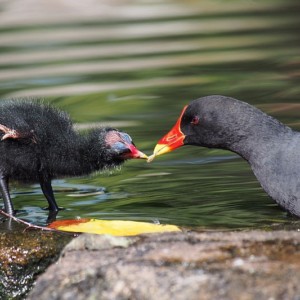#BOU2022 – Resources
 Avian reproduction
Avian reproduction
Nests, eggs and chicks: reproduction in a changing world
12 – 14 April 2022
Attendee resources
ATTENDEE GUIDE – all you need to know to attend this BOU Zoom conference
FULL PROGRAMME (Zoom and Twitter presentations)
KEYNOTE PRESENTERS
ALFRED NEWTON LECTURE | Prof Nick Davies, University of Cambridge, UK
ABSTRACTS
ONLINE SCHEDULE APP (with built in time converter)
SLACK APP our online networking app which also includes viewing posters, talk to presenters, etc.
SLACK GUIDE (user guide to our online networking app)
CODE OF CONDUCT
WORLD CLOCK including UTC time conversion for your local time
For those members attending the AGM
AGENDA
2021 ANNUAL REPORT
MINUTES OF 2021 AGM
Important note: all times given on these conference pages are UTC. Use the above online scheduler app or ensure you check your local time for the event here.
Conference theme
Within bird life histories, breeding events represent an opportunity to measure some of the fundamental drivers of population and evolutionary processes. It is a crucially important life stage that has heavy energetic demands on parents and offspring, and its consequences can be felt throughout the lifetime of the individuals involved. For offspring, the maternal and environmental effects of their rearing conditions influence their phenotype which determines their competitive and reproductive success later in life. For adults, the investment in offspring brings great rewards but also incurs costs that might carry-over for years. An understanding of the key components of reproductive success can provide important insights into the mechanisms of change and any potential associated limitations.
Whether we are interested in practical conservation or the more theoretical concepts within behaviour and evolution, the breeding stages of bird life histories provide an important focus for many studies. Ranging from nest architecture to egg colouration, clutch sizes to nestling growth patterns, and parental care to chick survival, our understanding of drivers of reproductive success have developed exponentially over the past few decades. From nest building to independent young, this conference aims to promote the latest research on reproductive strategies across a wide range of bird species.
The conference will aim to cover a range of topics relating to the nesting period in the life history of birds, including the following:
- Interactions between breeders, offspring and siblings, both within and between species;
- Individual strategies for breeding decisions – having second broods or abstaining;
- The evolution and function of egg morphology and nest structure;
- Development and ecophysiology of eggs and young;
- Costs of reproduction in a changing environment;
- Links between individual nest outcomes and population dynamics, and the conservation implication.
Themed issue of IBIS
Advance notice that in 2023 we are planning a themed issue of IBIS on this conference theme of avian reproduction. Submissions will be open to everyone whether they present at the conference or not on topics that fit within the aims and scope above.
Submit your paper for this issue of IBIS as normal after reading our submission guidelines (select the special issue box when prompted during submission). Deadline for submissions is 1 December 2022.
New parallel conference format
The BOU strives to make all our events inclusive and accessible. To help achieve this we now run all in-person and virtual Zoom conferences as dual platforms events with a Twitter conference running alongside the main in-person/virtual event.
Every presenter at a in-person/virtual event will now be required to tweet a summary of their presentation as part of the parallel Twitter event. We will also include additional Twitter-only presentations during the breaks of the in-person/virtual event.
For BOUsci20, the virtual Zoom event attracted an ‘in-the-room’ audience of 375 registrants, but the parallel Twitter event had over 550 participants, an ‘in-the-room’ audience of >1,600 people and a wider reach of 750,000 – from right around the world.
Unlike other social media platforms, Twitter is genuinely open access as you don’t even need an account to follow the Twitter event content. The BOU knows Twitter inside out having championed its use to promote ornithological research for the last decade and we’ve been running and sponsoring Twitter conferences for some years. Because of this take-up within our community is very high – 75% of BOU2019 delegates were on Twitter!
Presenters will be provided with extensive guidelines on how to tweet your presentation on Twitter, and you will be able to use either your personal or institute account. If neither of these are available, then we the BOU social media team will be on hand to discuss other options for you to present your work on Twitter.
See also Presenting at a Twitter conference
Scientific Programme Committee
Ian Hartley | University of Lancaster, UK (Chair)
José Alves | University of Aveiro, Portugal & BOU Meetings Committee
Sarah Burthe | UK Centre for Ecology & Hydrology
Becky Laidlaw | University of East Anglia, UK
Rob Robinson | BTO & BOU Meetings Committee, UK
Image credit: Top right, Common Moorhen feeding chick Francis C. Franklin CC BY SA 4.0 Wikimedia Commons


